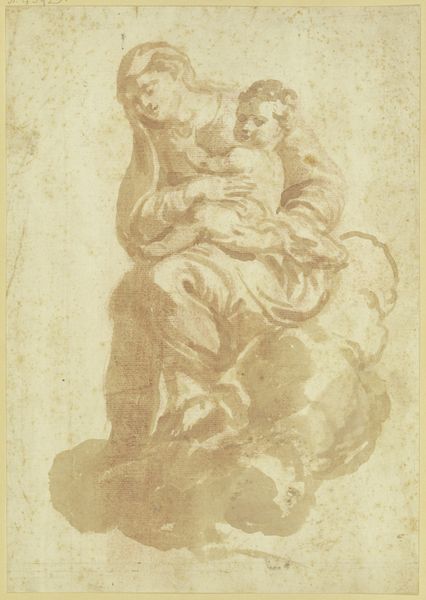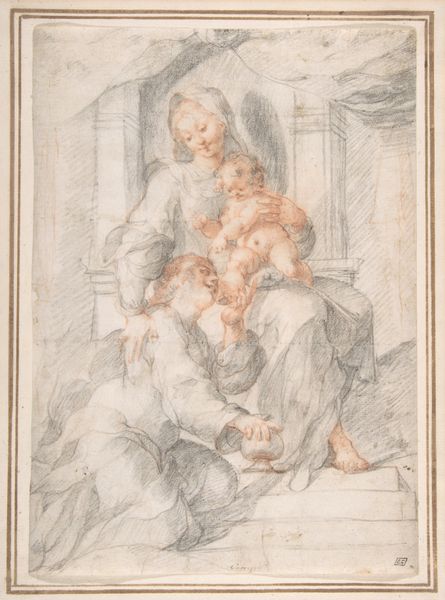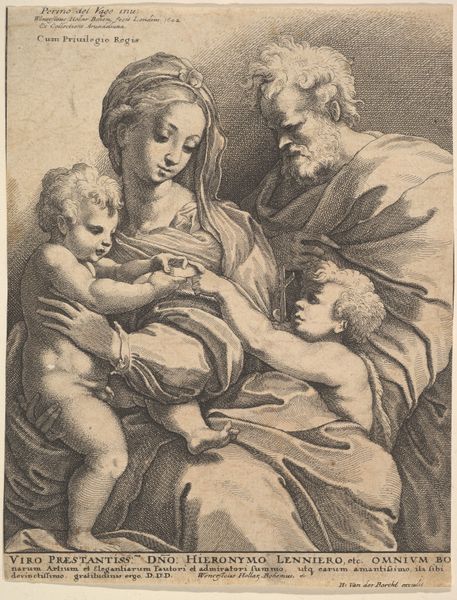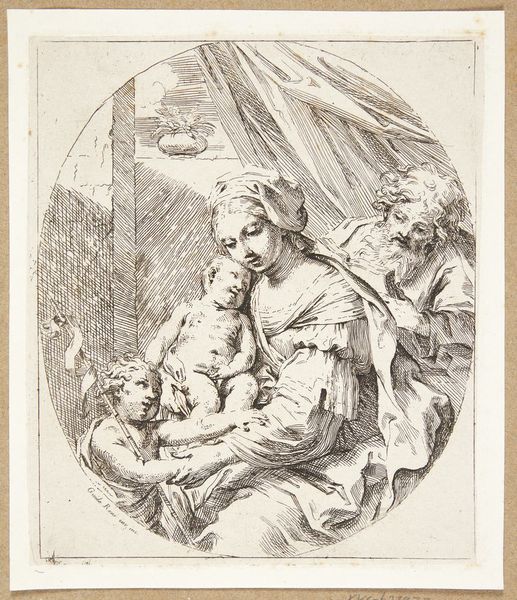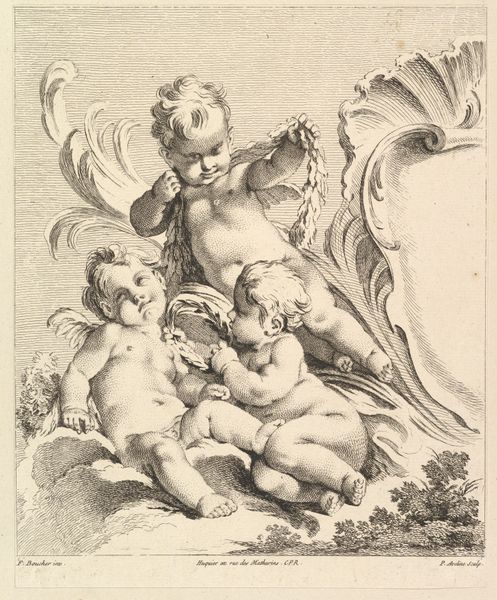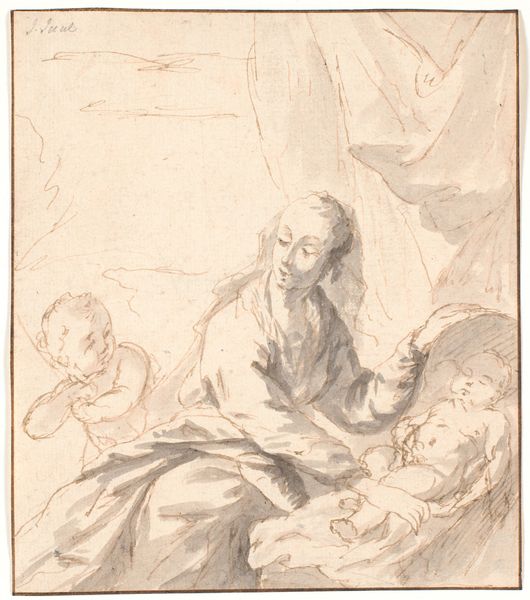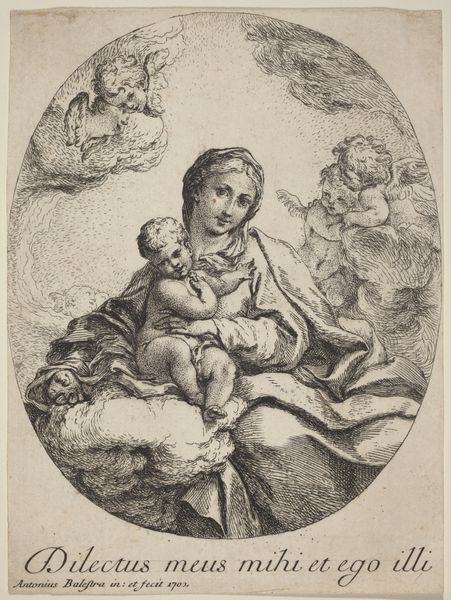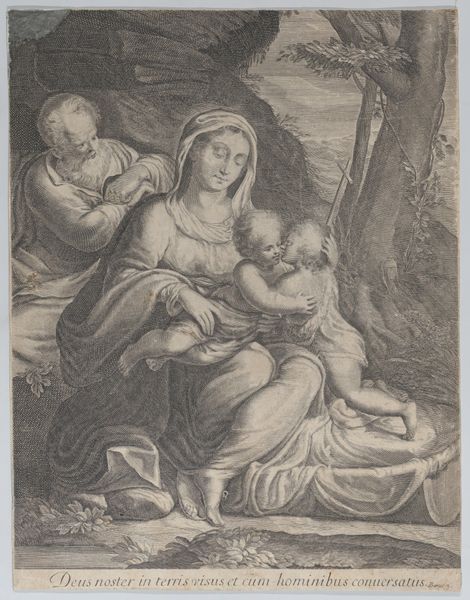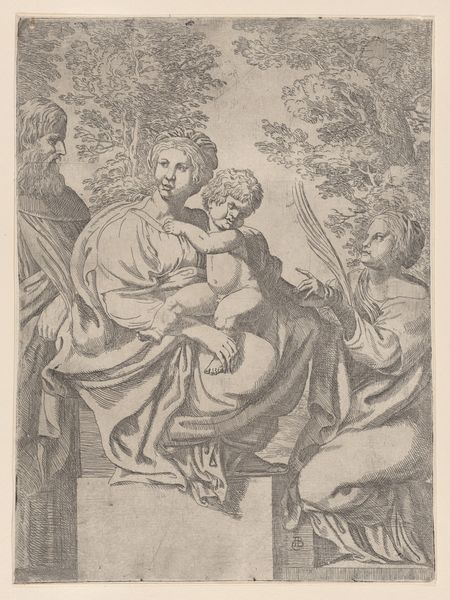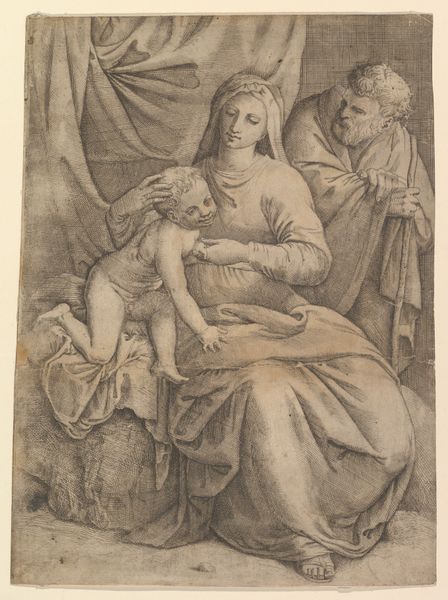
drawing, ink, chalk
#
portrait
#
drawing
#
baroque
#
caricature
#
ink
#
chalk
#
15_18th-century
#
chiaroscuro
#
portrait drawing
#
history-painting
Copyright: Public Domain
Editor: Here we have Adam Friedrich Oeser's "Madonna mit dem Kind und dem Johannesknaben," created sometime in the 18th century using ink and chalk. The drawing has a softness to it, despite being rendered in a monochrome palette. What strikes me is the tenderness expressed between the figures. What do you see in this piece? Curator: Beyond the apparent tenderness, I see a deliberate engagement with Baroque conventions, filtered through the burgeoning Enlightenment. Consider the context: the 18th century was a time of questioning established hierarchies. How does Oeser both uphold and subvert traditional representations of the Madonna? Editor: That's interesting, I hadn't considered that. What specifically about this piece challenges traditional depictions? Curator: Look at the intimacy, certainly, but also the everyday quality. The scene is domestic, less about divine authority and more about human connection. This speaks to broader shifts in social and political thought, as burgeoning bourgeois culture starts centering individual experience and feeling. What statements do you think Oeser might be trying to make about the shifting relationship between the individual and the institution? Editor: I see what you mean. By portraying Mary in this everyday manner, perhaps Oeser is democratizing religious icons. Curator: Exactly. The piece exists at the intersection of artistic tradition and social critique. It’s not overtly radical, but subtly shifts our understanding of power dynamics within religious art. Editor: It’s amazing how much a seemingly simple drawing can tell us about the complex societal changes of the time! I’ll definitely look at art differently now, with a sharper eye for social context. Curator: And remember, the dialogue between past and present is always ongoing. Keep asking questions, keep challenging assumptions, and keep engaging with art as a reflection of ourselves and our world.
Comments
No comments
Be the first to comment and join the conversation on the ultimate creative platform.
